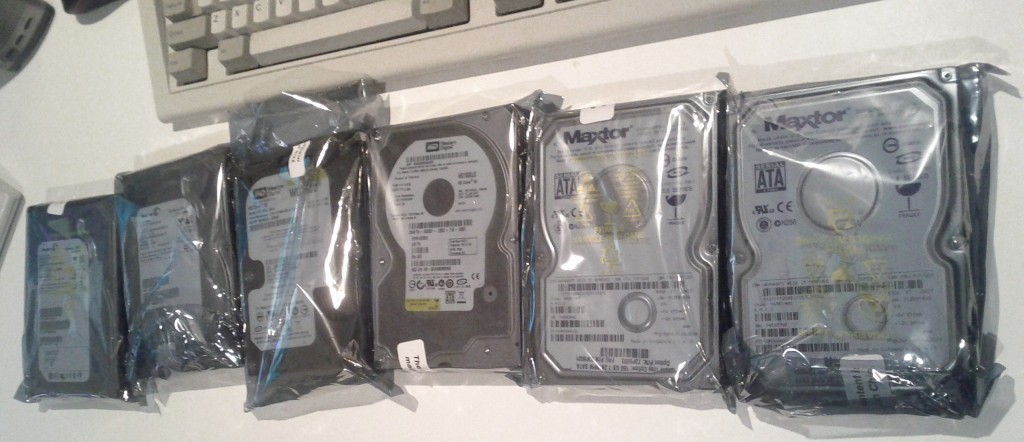Lifehacker regularly features a segment where they interview famous people and ask them how they work. Rather than waiting for the e-mail that would never come has yet to come, my friend Jack Scott decided to answer this set of questions on his own last week,then tapped my other friend Chris Neugebauer who then tapped me to answer them after him.
Location: Sydney, Australia. But my heart is still home in Wellington, New Zealand.
Current Gig: Senior Systems Engineer at Fairfax Media Australia. I’m part of a small team that looks after all of their AU websites (SMH, TheAge, Domain, RSVP, etc), responsible for building and managing the server infrastructure from hypervisor to application.
Current Mobile Device: Google/Samsung Galaxy Nexus Android phone. I have a love-hate relationship with how it enables me to be hyper-connected all the time.
Current Computer: At work I use an under-speced Lenovo X1 Carbon with Ubuntu Linux. In personal life it’s more interesting, with an aging 2010-era Lenovo Thinkpad X201i upgraded to 512GB SSD that still has it thrashing current market offerings, a 1U IBM xSeries 306m server for production websites and a large custom-built full tower server for files and dev VMs. I run a mixture of Debian and CentOS GNU/Linux distributions mostly. I did a post a while back on my setup here.
One word that best describes how you work: Hard
What apps/software/tools can’t you live without? Apps come and go over time… fundamentally for me my killer app is a GNU/Linux operating system with all the wonderful open source tools that it packs in. I’ve tried using both Windows and MacOS over the years, but have found that I’m always more productive with a GNU/Linux machine with many thousands of apps and tools just an apt-get install or yum install away.
What’s your workplace like? My “work” workplace is a pretty standard office, Fairfax has kitted it out with somewhat decent chairs and 27″ LCDs to hotdesk in. My home workspace these days is sadly just a couch or an unstable dining table. It’s very suboptimal, but as I’m only spending a limited time in AU and didn’t want to buy lots of stuff, I make do. My ideal setup looks more like what I had back in Auckland.
What’s your best time-saving trick/life hack? Make the effort to do things right the first time. Seriously, sloppy work, designs or documentation leads to huge time losses whilst working around issues or having to fix them at a later time.
What’s your favourite to-do list manager? For work life, it’s JIRA. We use it heavily at Fairfax and I assign all my priorities different tickets, it makes delegating tasks to other team members or splitting big bits of work into easily manageable chunks possible.
Besides your phone and computer, what gadget can’t you live without? Besides my computer?? The only gadget I care about strongly is my laptop, everything else is just “stuff” that I could take or leave. I’m pretty minimalist these days, could list all my gadgets on one hand.
What everyday thing are you better at than anyone else? What’s your secret?
Solving complex issues. I can take any problem and quickly determine the issue, the possible fixes and test and implement these. It’s not specific to IT, I’m good in a crisis and can solve issues quickly IRL as well. It comes naturally to me and it’s one of the things that allows me to be very effective in my job.
What do you listen to while you work? I don’t tend to listen so much whilst at work, but I certainly do when relaxing on personal projects. I have a wide range of tastes, my often played includes bands such as Kraftwork, Genesis, Nightwish, Eluvite, Ensiferum, Adele, The Killers, Meat Loaf, Mumford and Sons, Marillion, Muse, Rammstein, Tangerine Dream and many others that are far apart in genre.
What are you currently reading? Fairfax: The Rise And Fall. Lisa picked it up recently and it’s interesting reading a bit of the background behind the company I currently work for.
Are you more of an introvert or extrovert? An extroverted introvert. :-) I’m certainly an introvert in that I prefer small groups of close friends and staying in over going out, but at the same time I get on well with people and can happily go out and make friends without too much trouble.
What’s your sleep routine like? What’s sleep? I tend to go to sleep around 00:00-01:00 and get up at 07:30-08:00. It’s not the best, but there’s always so much to do in one day!
Fill in the blank. I’d love to see _____ answer these same questions. I’ve got many people in mind, but they tend not to have blogs. :-( So I’m going with Hamzah Khan, he has a pretty cool blog and I’m envious of his network racks. But I invite anyone else reading this to join in as well, don’t wait for an invite. :-)
What’s the best advice you’ve ever received? Invest in good tools. Whether it’s software or a hammer, either way bad tools will cause you pain, lost time, wasted money and endless frustration.
Is there anything else you want to add for readers? If you don’t currently blog, please do! It’s a fulfilling activity and I love reading blogs by my friends rather than throwaway 140char one liners and so many of you whom don’t blog have such interesting content that you could put up.


